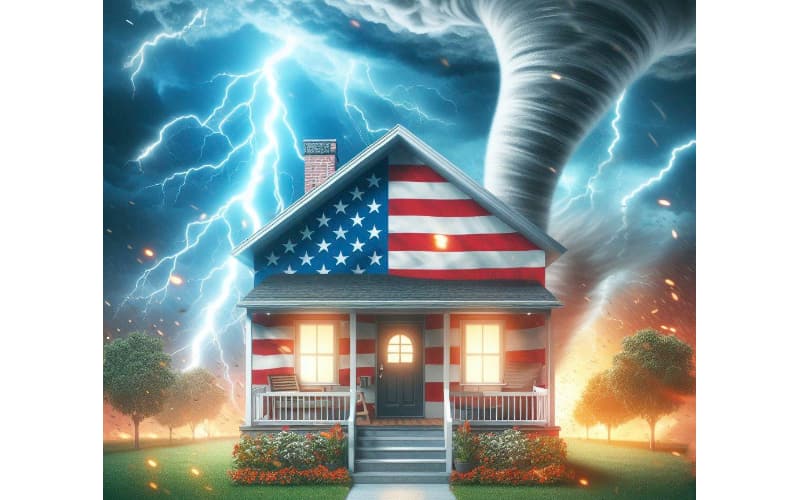US homeowners insurance underwriting loss in 2023 was worst this century

When the rising cost of property and catastrophe reinsurance in the United States gets called out as affecting the affordability of insurance, commentators would do well to remember just how poorly US homeowners property insurance underwriters have performed.
Reinsurance pricing is often cited as having a negative effect on the affordability of homeowners insurance in the United States, in particular in catastrophe exposed states such as Florida and California.
But the way reinsurance pricing has been rising is not at all surprising, when you consider just how unprofitable the homeowners insurance business has become.
Rating agency AM Best highlighted this today, in reporting that last year the United States homeowner’s insurance segment experienced its worst underwriting results since at least 2000.
In fact, the segment suffered a $15.2 billion underwriting loss in 2023, which was more than double the losses seen in the previous year.
AM Best explained that the 2023 loss was also the worst experienced this century, with $14.8 billion in losses in 2011 the next highest figure.
The rating agency notes that continued shifts in population towards catastrophe prone regions of the US, is a key driver.
“The U.S. population overall grew 7.4% between 2010-2020 but rose 10.2% in the South and 9.2% in the West during the period,” David Blades, associate director, Industry Research and Analytics, AM Best explained. “Population trends show residents increasingly moving toward regions that are more prone to hurricanes, severe convective storms or even wildfires.”
It’s not just the population shifts though, it’s also the increasing values-at-risk of natural catastrophes and severe weather, with inflation a further driver, that are driving loss potential higher in catastrophe prone regions.
“A growing population means an even larger rise in real property development and thus in insured values,” added Christopher Graham, senior industry analyst, AM Best. “Construction in catastrophe-prone areas adds to flood risk. It also increases the risk of wildfires in areas prone to them due to human activity, as well as utility companies.”
AM Best said that the direct combined ratio for homeowners insurance in 17 US states in 2023 surpassed the breakeven threshold of 100.
Since 2017, the number of states recording underwriting losses has been in double digits every year except 2019 and 2021. Prior to 2017, the count had consistently been in the single digits, AM Best explained.
The rating agency notes that, “this increase is more evidence of the impact that climate risks and population migration has had on the homeowners segment’s results.”
AM Best said that loss ratios are likely to remain pressured, also citing the more challenging reinsurance environment, which is clearly a response to insurers poor performance and also the fact more losses were previously being passed to reinsurers, until the reset in reinsurance attachments and terms that occurred over the last couple of years.
Underscoring just how bad things are in US homeowners insurance segment, AM Best said that, “a return to underwriting profitability for the segment over the near term is unlikely.”
Which, for reinsurance companies and ILS fund managers, makes selectivity of partners and the terms of coverage offered absolutely critical.
It’s unfair to tar all US homeowners writers with the same brush, as many are delivering profitable underwriting results. But still, maintaining an adequate share of losses, between primary insurers and reinsurance capital is very important.
Also critical is that there is no return to soft market terms and conditions, with very low attachments.
It’s important to look at the drivers behind the higher reinsurance rates and tougher coverage terms, of which the unprofitable performance of homeowners books of business is one of the most important.
While this is a challenge for primary insurers, there is a need to demonstrate the long-term profitability of portfolios in order to encourage better pricing and terms from capital providers.
As such, capital and capacity partnerships may become key going forwards and this could be a way for reinsurers and ILS funds to get clearer visibility into how homeowners businesses perform, which should ultimately benefit the buyers of reinsurance when renewals come around.






